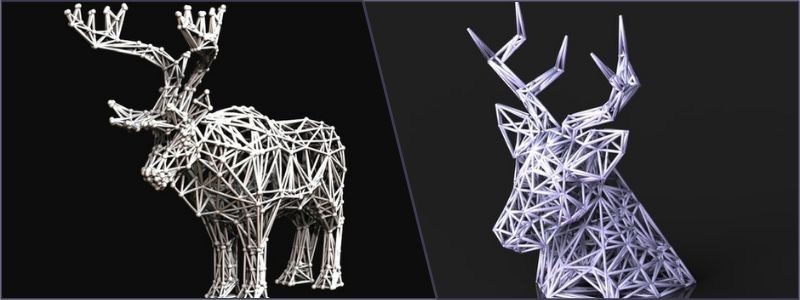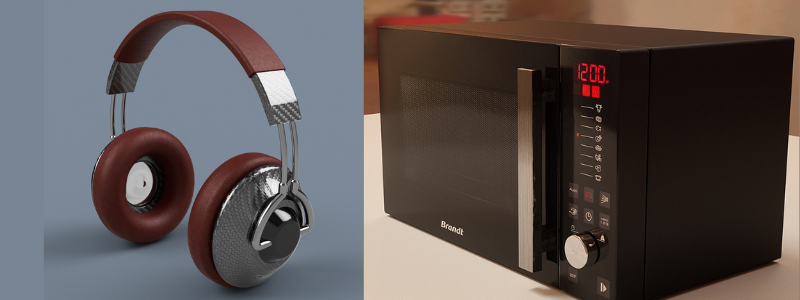The most challenging work for any marketer or product seller is to communicate with potential customers how any particular product is better, unique, or simply different in any way from competitors’. Some products are without a doubt peculiar enough that everyone can quickly get the idea of how they should work, their function, and their value. Still, for anything else, the main value delivered by 3D modeling companies is all about the marketing strategy. While it might not be a big issue for giant companies with an unlimited marketing budget, startups will find themselves struggling.
The problem is not about launching the product to market but making the products stand out when consumers are constantly bombarded with similar offerings. An easy answer comes from the use of 3D models. Realistic digital visualization is nowhere near the same as photography. High-quality 3D models and rendering allow the customers to understand the product, how it works, why they need one, and imagine themselves wearing/using it. A photograph can technically deliver the same effect, but the resources required would be much more significant.
 Table of Contents
Table of Contents
RELATED: CAD design and 3D modeling rundown
Why choose 3D models over standard photography?
If flexibility and affordability are parts of the marketing strategy, 3D models are the best possible option for various reasons.
 No prototype needed
No prototype needed
One of the most significant differentiating factors between photography and 3D models is the need for a prototype. The former cannot be possible done without having the actual product on the frame. At the very least, the photographer has to use a working prototype. On the other hand, a 3D model is an entirely digital object created on screen. You can use the object as content on websites or print them for offline marketing. If you do it correctly, the image quality is as realistic as a photograph and much more versatile. You can easily change colors, shapes, sizes, and resolutions to fit the advertising medium.
 Endless variations
Endless variations
Another advantage is the possibility of modifying the object in a way that photography cannot. There is photo manipulation software, but then again, you need a physical prototype as a starting point. Since 3D models are nothing more than digital files, CAD software can manipulate every design aspect with relative ease. For a product that offers a lot of variations, this kind of flexibility saves a lot of money in marketing. Let us say the product comes in multiple versions with different materials, textures, colors, dimensions, or perhaps shapes; what you need is a single 3D model modified to showcase the available options.

 Countless Backgrounds
Countless Backgrounds
The backdrop options are practically limitless. An empty backdrop – black, white, or any other solid color – helps highlight the product in all its details. Some people like plain color backdrops because they can see the product without distraction on screen. However, you can create a creative atmosphere surrounding the product to showcase its appearance in the real world. For example, if the product is a table lamp, you may want to use a more elaborate backdrop like an office room or a desk. With 3D models, an actual desk is not necessary.
 Cutaway
Cutaway
Complex products with many moving parts inside present a unique challenge in marketing, especially if you want to highlight the inner workings. Even with 3D models, exposing the internal components is not the easiest but far from being impossible. In the past, 3D models were pretty expensive, and only big companies could afford them.
As the technology improves and CAD software decreases in price (some are free to use, such as open-source Blender), even small businesses can take advantage of product visualization without breaking the bank. It is not as expensive as it used to be, and the results are way better than before. It is getting more common, but not yet to the point where every brand uses 3D models in their marketing strategy.
RELATED: 3D modeling & CAD design recap
Marketing implementation
More importantly, businesses use their 3D models in different ways. Some post the image on websites or online shops, and others share the images on social media. Take the more effective approach and use the models in various platforms to attract more customers and increase sales.
Showcase Interactive Content
Small products such as clothing, shoes, electronic devices, jewelry, or novelty items look the best on an online page with simple interactive features. More recently, the most common examples are smartphone brands that display their latest products using 3D models.Users can zoom in and rotate the product to have the best possible 360-degree view. Such an interactive feature gives enough time for potential buyers to inspect the item closely before making a purchase. It is possible to add some sound effects as well.
There can be seemingly minor details like color schemes, stitching, and small decorative elements that affect purchasing decisions. People may not want to buy a product at first but change their attitude upon closer inspection. Embedded 3D models require some additional web-based applications. You have the option to use open-source libraries or paid alternatives such as Vectary, Sketchfab, Modelo, Emersya, etc. Most of these applications allow users to interact with the model. A potential downside is that interactive models are sometimes problematic on small screen devices such as smartphones.
3D Product animation
A significant change in the digital marketing paradigm happens thanks to 3D product animation services. Marketers can showcase how a product works using animation. A professional modeler can highlight intriguing mechanical properties and moving parts inside a product in smooth, enjoyable motion. For example, there are probably hundreds of YouTube videos showing how a mechanical wristwatch works.
Such a watch contains a myriad of moving parts, especially one with multiple complications. Compared to other objects of similar size, mechanical watches are complex pieces of engineering. If a modeler can produce an animation like that, it certainly is possible to make similar animations of other products. Furthermore, videos are more enjoyable than images but just as easy to share. Video animation is also great for trade shows or pitching the product during a meeting with investors.

Instead of only relying on online stores or business websites, be more active on social media to promote products. However, being active may not be enough; any marketer has to offer attractive content to generate leads or start a discussion about a product. Animated videos and 3D models are not only interesting but also thought-provoking. Even people who are otherwise not interested in the product may join the conversation at the sight of the 3D model posted. Social media activity may not generate sales, but it helps create brand awareness.
Marketing on social media or video-sharing platforms such as YouTube is effective and relatively cheap. Work together with one or more influencers of the product category. If you sell kitchenware, send the products to well-known cooking enthusiasts on YouTube with many subscribers and views. It sounds pretty straightforward, but in reality, you may have to pay good money to have your products featured. As a rule of thumb, the advertising cost is the number of subscribers divided by 100. An influencer with 100,000 YouTube subscribers may ask for $1,000 per post plus the additional cost of sending the product in the first place.
Rendered 3D images
Computer-generated Imagery (CGI) is a viable option when you want a more practical alternative to 3D models. Rendered 3D images are two-dimensional but hyper-realistic, which gives the viewer the impression that it’s still just an image. Rendering turns an otherwise stand-alone 3D model into a realistic image with backdrops. In the case of videos, you can animate the surroundings. It is most commonly used in the real-estate business to showcase both the exterior and interior of a house. A rendered image or video also starts with a 3D model.
For marketing, the 3D model goes inside a realistic-looking digital environment. That creates a perfect still or animated image. Businesses often use renderings to modify their advertising campaign throughout the year following holiday seasons or special days. For example, a pair of shoes that may look plain in front of a blank backdrop may appear more appealing when the marketing poster includes a Christmas tree or Mother’s Day decoration.
RELATED: 19 ways 3D product rendering is used by furniture companies to fuel sales growth
CGI: The game changer
Thanks to CGI, it is unnecessary to decorate an actual room or re-manufacture items and then take photos of them. Digital rendering makes it all possible on screen. Marketers have the freedom to use as many background variations as they want.
The overall perception, of course, depends on the level of detail. For a 3D product rendering to be perfect, you should thoroughly configure every aspect. That includes materials, textures, colors, shadows, and lighting. The viewing angle also matters so that viewers’ attention goes to the product. That is one aspect where once again, 3D modeling is much better than photography.
It is easier to fine-tune all the image elements on screen without an expensive camera and lighting setup. The CGI studio only needs a detailed description of the product and the backdrop you need to produce great marketing material. Also, the 3D model can be used repeatedly, with different backgrounds and viewing angles for future campaigns.
How Cad Crowd can help
At Cad Crowd, we work with pre-qualified, top-tier professionals in the 3D industry and specialize in various software to turn your product idea into an impressive marketing display. Work in confidentiality with a top designer and get started on your product design right away. Receive a free quote and we can help you find the right 3D modelers for your project.
